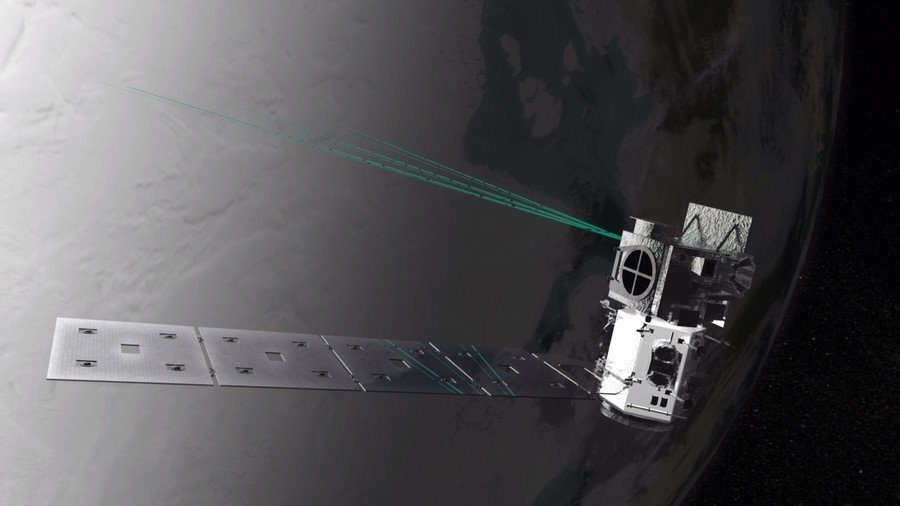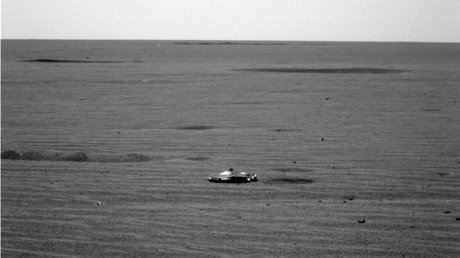Ice to see you: NASA blasts Antarctic with satellite laser to keep tabs on climate change (VIDEOS)

NASA has begun testing its low-orbit satellite laser system by bombarding the Antarctic with trillions of photons in the hopes of pinpointing the degree to which climate change is impacting the polar ice caps.
The space agency’s Ice, Cloud and land Elevation Satellite-2 (ICESat-2) was launched into orbit on September 15 but only fired for first time on September 30. The two-week lead time was to allow earthly contaminants and gases to dissipate before testing the laser.
... the bright green photons beam down to 🌎 from about 310 miles in orbit. Most get thrown off course by clouds ☁️ and other atmospheric particles…. pic.twitter.com/Fev6YNMGmG
— NASA ICE (@NASA_ICE) October 3, 2018
The concept is simple: the laser fires 10,000 pulses per second at the ice cap and measures the travel time of the few photons that return back up into orbit. The ICESat-2’s sole instrument, called the Advanced Topographic Laser Altimeter System (ATLAS) can time photons with incredible accuracy - a precision of less than a billionth of a second.
... laser photons from #ICESat2 hit the surface- whether it's ❄️ or 🌳 or 🌊or 🏙️- & bounce back into space... pic.twitter.com/ZUWzQAhhZl
— NASA ICE (@NASA_ICE) October 3, 2018
“We were all waiting with bated breath for the lasers to turn on and to see those first photons return,”said Donya Douglas-Bradshaw, ATLAS project manager. The device must sift through clouds of the detected photons to clear the ICESat’s signal from the surrounding noise, generated mostly by our Sun.
... #ICESat2 precisely aims 🎯 the laser beams so that reflecting photons come right back to the satellite’s receiver telescope... pic.twitter.com/p9nhKYI4Bh
— NASA ICE (@NASA_ICE) October 3, 2018
“Seeing everything work together in concert is incredibly exciting. There are a lot of moving parts and this is the demonstration that it’s all working together,” Douglas-Bradshaw adds.
READ MORE: First ever ‘exomoon’ discovered orbiting planet outside our solar system – study
ICESat-2 has taken up its final polar orbit, approximately 310 miles (500 kilometers) above Earth and will undergo several more months of calibration and testing before the program properly begins.
Think your friends would be interested? Share this story!














